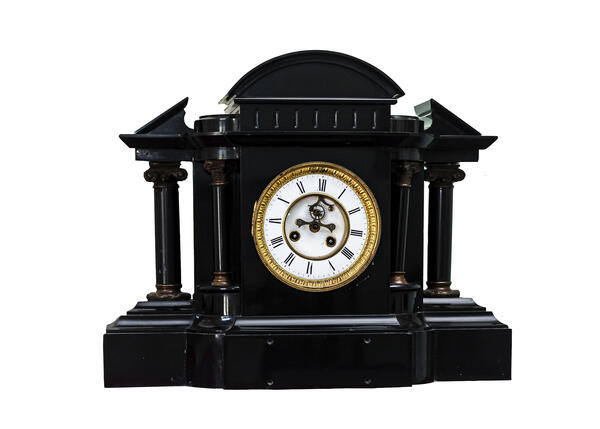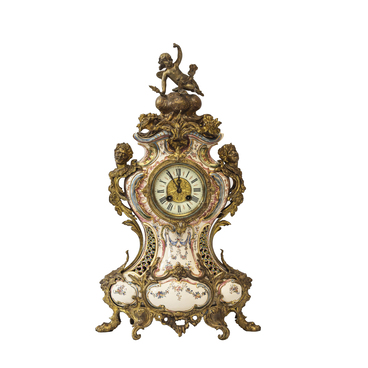The mantel clock, displayed in the collection, was made between 1860 and 1870. The hands were lost, but the case itself has been well preserved to this day. Such clocks were called “fireplace regulators” because they were usually equipped with heat-compensating mercury pendulums.
Scientist George Graham invented the mercury pendulum mechanism. He wondered what the accuracy of the clock depends on, and concluded that the change in temperature plays an important role in it. Therefore, he filled the pendulum of the clock with mercury, which coefficient of thermal expansion is much higher than that of iron. Graham’s experiments showed that when the temperature rises, so does the length of the pendulum, but because the mercury in the tube rises, its center of gravity lowers. This allows for an impeccable accuracy of the clockwork.
Vincenti and his business partner James Thayer were able to sell part of their shares to entrepreneur Albert Roux and make 110.000 Swiss francs, which allowed the firm to resume production on October 24, 1829.
Six years after the bankruptcy, in 1834, the company took part in the Paris International Exhibition. The “Vincenti & Cie” clocks captivated the jury and were awarded the silver medal. However, Jean Vincenti did not live to see this moment: he died of cancer in 1833. After his death, Albert Roux took over the management of the company. Legally, the company name was changed to “Albert Roux & Cie”, but the clocks continued to be sold under the brand name “Vincenti & Cie”.
“Vincenti & Cie” company was closed in 1923.
Scientist George Graham invented the mercury pendulum mechanism. He wondered what the accuracy of the clock depends on, and concluded that the change in temperature plays an important role in it. Therefore, he filled the pendulum of the clock with mercury, which coefficient of thermal expansion is much higher than that of iron. Graham’s experiments showed that when the temperature rises, so does the length of the pendulum, but because the mercury in the tube rises, its center of gravity lowers. This allows for an impeccable accuracy of the clockwork.
“Vincenti & Cie” company produced this clock mechanism. Clockmaker Jean Vincenti, a Corsican by birth, who settled in France in 1791, founded it. On October 6, 1823, he opened a workshop in the town of Montbéliarde and began developing production machines and devices for making gears, drives, flywheels, and complete clock mechanisms. A few years later, the company ran into financial difficulties and in 1828 was forced to declare bankruptcy.
Vincenti and his business partner James Thayer were able to sell part of their shares to entrepreneur Albert Roux and make 110.000 Swiss francs, which allowed the firm to resume production on October 24, 1829.
Six years after the bankruptcy, in 1834, the company took part in the Paris International Exhibition. The “Vincenti & Cie” clocks captivated the jury and were awarded the silver medal. However, Jean Vincenti did not live to see this moment: he died of cancer in 1833. After his death, Albert Roux took over the management of the company. Legally, the company name was changed to “Albert Roux & Cie”, but the clocks continued to be sold under the brand name “Vincenti & Cie”.
In 1855, the company won the gold medal at the Paris exhibition. The company celebrated these victories by printing on the stamps of its products inscriptions: “VINCENTI-Medaille d’Argent 1834” and “VINCENTI & Cie, Medaille d’Argent 1855”.
“Vincenti & Cie” company was closed in 1923.



